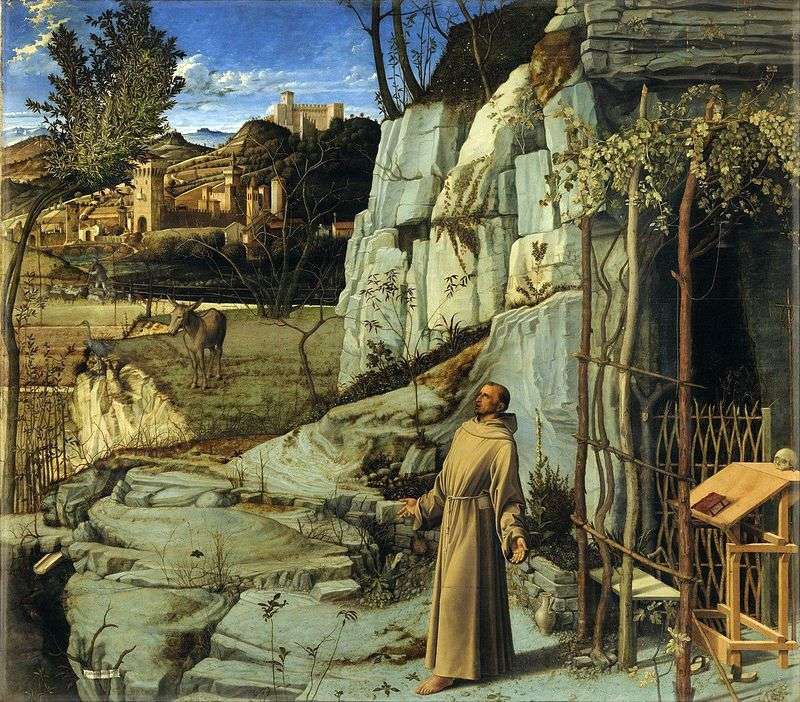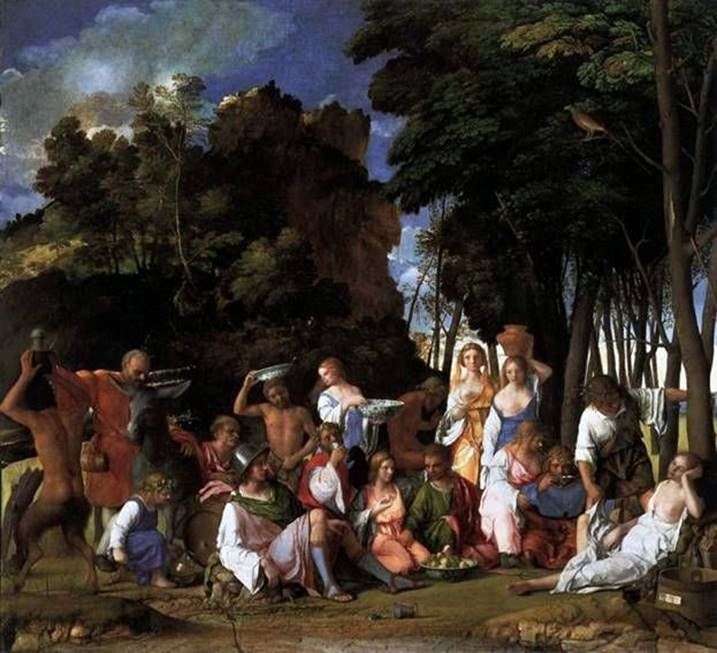
This picture is a laudatory song to the Creator and the beauty of the world He created. The landscape here is not just a background, but a kind of book, each symbol of which can be read – you only need to be able to read it. The main character is Saint Francis of Assisi, one of the most beloved saints of the Italian people. The life of Francis was described in great detail in many sources of that time, and the artist who sought to capture the image of the saint did not lack information. Perhaps that is why the painters so often portrayed him.
Saint Francis was the son of wealthy and noble parents, before him a brilliant future opened, but he decided to devote his life to God and spent his days in poverty and penitential prayer. Turning to the life of the saint, the artists usually chose for their paintings the scene of the appearance on the body of Francis of stigmata – wounds that repeat those received on the cross of the Savior. This scene is really very interesting for the painter. Many experts believe that Bellini in his painting, too, alludes to stigmata. But if it’s a hint, it’s very veiled. It is more logical to assume that Saint Francis was revealed to us just at the moment of prayerful ecstasy.
Giovanni Bellini, showed himself, above all, as a master of light and color. Fame came to him not immediately. His best paintings, such as “The Ecstasy of St. Francis,” were written at the turn of the 15th and 16th centuries. The saint depicted here is so small compared to the surrounding landscape that it seems insignificant, and yet his mystical rapture over the beauty of the material world is transmitted to us. Having removed wooden shoes, he stands barefoot on the holy ground.
Bellini’s interest in the lyrical, light-filled landscape testifies to the influence of the great Dutch artists: in Venice, which had strong trade ties with the Nordic countries, the works of these artists aroused genuine admiration. Bellini, no doubt, was familiar with the creations of the Dutch masters and shared their attentive and careful attitude to the slightest details in the depiction of nature. In his work, he gave a heap of stones in the foreground structural clarity and firmness, as if depicting an architectural structure in accordance with the laws of the scientific perspective.
 St. Francis in ecstasy by El Greco
St. Francis in ecstasy by El Greco Prayer for the Chalice or Agony in the Garden by Giovanni Bellini
Prayer for the Chalice or Agony in the Garden by Giovanni Bellini St. George and the Dragon by Giovanni Bellini
St. George and the Dragon by Giovanni Bellini The ecstasy of St. Francis by Michelangelo Merisi and Caravaggio
The ecstasy of St. Francis by Michelangelo Merisi and Caravaggio The Feast of the Gods by Giovanni Bellini
The Feast of the Gods by Giovanni Bellini Young woman behind the toilet by Giovanni Bellini
Young woman behind the toilet by Giovanni Bellini St. Jerome reading in nature by Giovanni Bellini
St. Jerome reading in nature by Giovanni Bellini Martyrdom of St. Peter by Giovanni Bellini
Martyrdom of St. Peter by Giovanni Bellini